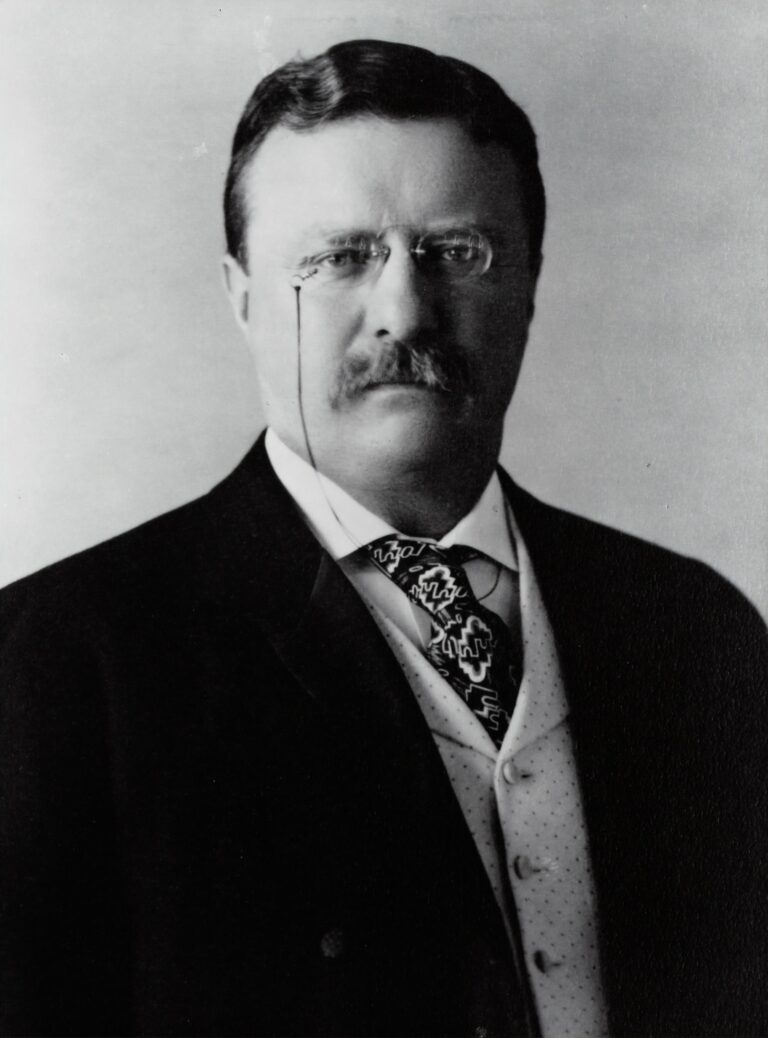From Dictatorship to Empowerment: Embracing Servant Leadership for a Better Future
 Outdated Leadership Techniques Holding Your Organization Back? Here’s Why Servant Leadership is the Future
Outdated Leadership Techniques Holding Your Organization Back? Here’s Why Servant Leadership is the Future
The world of business is evolving at a rapid pace, and with it, the expectations of what it means to be an effective leader. The outdated models of leadership that were once prevalent in organizations, such as self-serving, autocratic, and dictatorial leadership, are no longer effective in today’s workplace. To succeed in this modern age, leaders must embrace a new style of leadership that is focused on serving others rather than being served.
This is where servant leadership comes in. The concept of servant leadership is not new, but it has gained popularity in recent years as organizations realize the benefits of adopting this leadership style. At its core, servant leadership is about putting others first, empowering and supporting team members, and creating an environment where everyone can thrive.
In this article, we will explore the benefits of servant leadership and provide practical tips for implementing this leadership style in your organization. We will also examine the challenges of adopting a servant leadership mindset and look at real-world examples of successful servant leaders.
The purpose of this article is to help leaders understand why servant leadership is so important in today’s workplace and how they can embrace this style of leadership to improve employee satisfaction, boost productivity, and create a positive organizational culture. Whether you are a seasoned leader or just starting your leadership journey, the insights shared in this article will help you become a more effective and empathetic leader.
Understanding Servant Leadership
Definition of servant leadership
Servant leadership is a leadership style that focuses on putting the needs of others first. This means that the leader’s primary objective is to serve their team members, employees, customers, and stakeholders, rather than prioritizing their own interests. Servant leaders create a culture of trust, respect, and empathy by prioritizing the well-being and development of their team members.
Characteristics of a servant leader
Servant leaders exhibit several characteristics that distinguish them from traditional leaders. These include:
-
Empathy: A servant leader is attuned to the needs of their team members, and they understand and appreciate their unique perspectives.
-
Listening: Servant leaders actively listen to their team members, seeking to understand their concerns, ideas, and feedback.
-
Humility: Servant leaders do not see themselves as superior to their team members. They recognize that every individual brings value to the organization and seeks to learn from others.
-
Empowerment: Servant leaders empower their team members by providing them with the resources, support, and autonomy needed to succeed.
-
Vision: Servant leaders have a clear vision for the future of the organization and communicate this vision to their team members in a way that inspires and motivates them.
Differences between traditional leadership and servant leadership
Traditional leadership is often characterized by a hierarchical structure, where the leader is seen as the ultimate authority figure. This style of leadership can lead to an unhealthy power dynamic, with the leader prioritizing their own interests over those of their team members. In contrast, servant leadership is a more collaborative and empowering approach to leadership. Instead of being the ultimate authority figure, the servant leader acts as a facilitator, empowering their team members to take ownership of their work and contribute to the success of the organization.
Servant leadership also differs from other popular leadership styles, such as transformational leadership or charismatic leadership. While these styles of leadership can be effective in certain situations, they often focus more on the leader’s personality and ability to inspire others, rather than on serving the needs of their team members.
Overall, the key difference between traditional leadership and servant leadership is the focus on serving others. Servant leaders recognize that their success is tied to the success of their team members, and they prioritize their team members’ needs above their own.
Benefits of Servant Leadership
Improved employee satisfaction and morale
When leaders prioritize the needs of their team members, it creates a sense of trust and respect within the organization. This leads to increased employee satisfaction and morale, as team members feel valued and appreciated. Servant leadership also creates a sense of ownership and responsibility among team members, which can lead to greater engagement and motivation.
Increased productivity and efficiency
By empowering their team members and providing them with the resources and support they need to succeed, servant leaders can increase productivity and efficiency within the organization. When team members feel supported and valued, they are more likely to be invested in their work and motivated to perform at their best. Additionally, servant leadership encourages open communication and collaboration, which can lead to more innovative and effective solutions to organizational challenges.
Enhanced organizational culture and retention rates
A culture of trust, respect, and empathy is essential for creating a positive and productive work environment. Servant leadership fosters this type of culture by prioritizing the well-being and development of team members. When team members feel valued and supported, they are more likely to be loyal to the organization and stay for the long term. This can lead to lower turnover rates and a more stable and committed workforce.
Overall, servant leadership can lead to a wide range of benefits for organizations. By prioritizing the needs of their team members and empowering them to succeed, leaders can create a more positive and productive work environment, with higher levels of employee satisfaction, productivity, and retention.
It’s worth noting that the benefits of servant leadership are not just limited to the workplace. By creating a culture of empathy and service, servant leaders can also have a positive impact on the wider community. This can lead to a stronger reputation for the organization and greater opportunities for collaboration and partnership. Ultimately, servant leadership is not just a way to improve organizational outcomes, but also a way to create a more just and equitable society.
How to Implement Servant Leadership
Identifying and understanding the needs of team members
The first step in implementing servant leadership is to understand the needs and perspectives of your team members. This requires active listening, empathy, and a willingness to learn from others. Leaders can use a variety of tools and techniques to better understand their team members, including one-on-one meetings, employee surveys, and focus groups.
Empowering and supporting team members
Servant leaders must empower their team members to take ownership of their work and contribute to the success of the organization. This means providing them with the resources, support, and autonomy needed to succeed. It also means recognizing and celebrating their successes and helping them navigate challenges when they arise.
Encouraging open communication and feedback
Servant leaders must create an environment where team members feel comfortable sharing their thoughts, ideas, and concerns. This requires open communication channels and a willingness to receive feedback. Leaders can encourage open communication by modeling vulnerability and transparency, setting clear expectations, and creating opportunities for team members to collaborate and share their perspectives.
Leading by example and modeling servant leadership behavior
Finally, servant leaders must lead by example and model the behavior they want to see in their team members. This means prioritizing the needs of others, practicing active listening and empathy, and empowering and supporting team members to succeed. Servant leaders must also be willing to admit when they make mistakes, seek feedback from others, and learn from their experiences.
Implementing servant leadership requires a shift in mindset and a willingness to let go of traditional notions of leadership. It also requires a commitment to ongoing learning and growth. By prioritizing the needs of others and creating a culture of service and empathy, leaders can transform their organizations and create a more positive and productive work environment.
It’s worth noting that implementing servant leadership is not a one-size-fits-all approach. The specific techniques and strategies used will depend on the unique needs and context of the organization. Leaders must be willing to experiment, iterate, and adapt their approach as needed to ensure that they are creating the most effective and impactful environment possible.
Challenges of Servant Leadership
While the benefits of servant leadership are clear, implementing this style of leadership can be challenging. Leaders may face resistance from team members who are accustomed to traditional leadership models, and they may struggle to balance the needs of their team members with the needs of the organization. Here are some of the key challenges of servant leadership and strategies for addressing them:
Overcoming the mindset of traditional leadership
One of the biggest challenges of servant leadership is overcoming the mindset of traditional leadership. Leaders may be accustomed to a hierarchical structure where they are seen as the ultimate authority figure, and it can be difficult to let go of this mindset. To overcome this challenge, leaders must be willing to embrace vulnerability and transparency. They must be willing to admit when they don’t know something, seek feedback from others, and learn from their experiences. They must also be willing to let go of their ego and prioritize the needs of their team members over their own interests.
Balancing the needs of team members with the needs of the organization
Another challenge of servant leadership is balancing the needs of team members with the needs of the organization. While servant leaders prioritize the well-being and development of their team members, they also have a responsibility to ensure that the organization is successful and sustainable. To address this challenge, leaders must be able to see the big picture and understand how the needs of their team members fit into the larger context of the organization. They must also be willing to make difficult decisions and have difficult conversations when necessary.
Addressing resistance from team members who are accustomed to traditional leadership
Finally, leaders may face resistance from team members who are accustomed to traditional leadership models. Some team members may be skeptical of the servant leadership approach, viewing it as weak or ineffective. To address this challenge, leaders must be willing to educate their team members about the benefits of servant leadership and create a culture of trust and respect within the organization. They must also be willing to lead by example and model the behavior they want to see in their team members.
Ultimately, implementing servant leadership requires a willingness to let go of traditional notions of leadership and embrace a more collaborative and empowering approach. While it can be challenging, the benefits of servant leadership are clear, and leaders who are willing to put in the work can create a more positive and productive work environment.
Successful Servant Leaders
There are many examples of successful servant leaders across a range of industries. Here are a few case studies that demonstrate the impact of servant leadership on organizational success:
Patagonia
Patagonia, a leading outdoor apparel company, is known for its commitment to environmental sustainability and social responsibility. CEO Rose Marcario is a well-known advocate for servant leadership, and she has implemented a number of policies and initiatives to support this approach. For example, Patagonia offers on-site childcare, paid time off for activism, and a “let my people go surfing” policy that encourages employees to take time off for outdoor activities. These initiatives have led to high levels of employee satisfaction and engagement, and Patagonia is consistently ranked as one of the best places to work.
Southwest Airlines
Southwest Airlines is known for its customer-centric approach and emphasis on employee empowerment. Former CEO Herb Kelleher was a strong advocate for servant leadership, and he implemented a number of policies and practices to support this approach. For example, Southwest offers profit-sharing and stock options to all employees, and it encourages employees to share their ideas and feedback through a variety of channels. These practices have led to high levels of employee loyalty and a strong reputation for customer service.
Starbucks
Starbucks CEO Kevin Johnson is a strong advocate for servant leadership, and he has implemented a number of policies and initiatives to support this approach. For example, Starbucks offers tuition reimbursement, stock options, and health benefits to all employees, and it encourages employees to share their ideas and feedback through a variety of channels. These initiatives have led to high levels of employee satisfaction and engagement, and Starbucks is consistently ranked as one of the best places to work.
These case studies demonstrate that servant leadership can lead to significant benefits for organizations. By prioritizing the needs of their team members and creating a culture of trust, respect, and empathy, these leaders have created a more positive and productive work environment. They have also demonstrated that servant leadership is not just a way to improve organizational outcomes, but also a way to create a more just and equitable society.
While these case studies are inspiring, it’s worth noting that implementing servant leadership is not just about copying the practices of successful organizations. Leaders must tailor their approach to the unique needs and context of their organization and be willing to experiment, iterate, and adapt their approach as needed. By taking a thoughtful and intentional approach to servant leadership, leaders can create a more positive and productive work environment for their team members and contribute to the success of their organization.
Creating a More Just and Productive Future: The Power of Servant Leadership
In today’s rapidly changing business landscape, organizations must adapt their leadership styles to keep pace with the needs of their team members and customers. The traditional models of self-serving, autocratic, and dictatorial leadership are no longer effective in today’s workplace. Instead, organizations must embrace a new style of leadership that is focused on serving others: servant leadership.
Servant leadership is a leadership style that prioritizes the needs of others, empowers and supports team members, and creates an environment where everyone can thrive. This style of leadership has been shown to improve employee satisfaction and morale, increase productivity and efficiency, and enhance organizational culture and retention rates.
To implement servant leadership, leaders must prioritize understanding the needs and perspectives of their team members, empower and support team members, encourage open communication and feedback, and lead by example and model servant leadership behavior. However, implementing servant leadership can be challenging, and leaders may face resistance from team members who are accustomed to traditional leadership models.
Despite these challenges, there are many successful examples of servant leadership across a range of industries, including Patagonia, Southwest Airlines, and Starbucks. These case studies demonstrate the benefits of servant leadership and the impact it can have on organizational success.
In conclusion, servant leadership is not just a way to improve organizational outcomes, but also a way to create a more just and equitable society. By prioritizing the needs of others and creating a culture of service and empathy, leaders can transform their organizations and create a more positive and productive work environment. Leaders who are willing to embrace this approach and put in the work to implement it can create a better future for their organizations, their team members, and the wider community.





